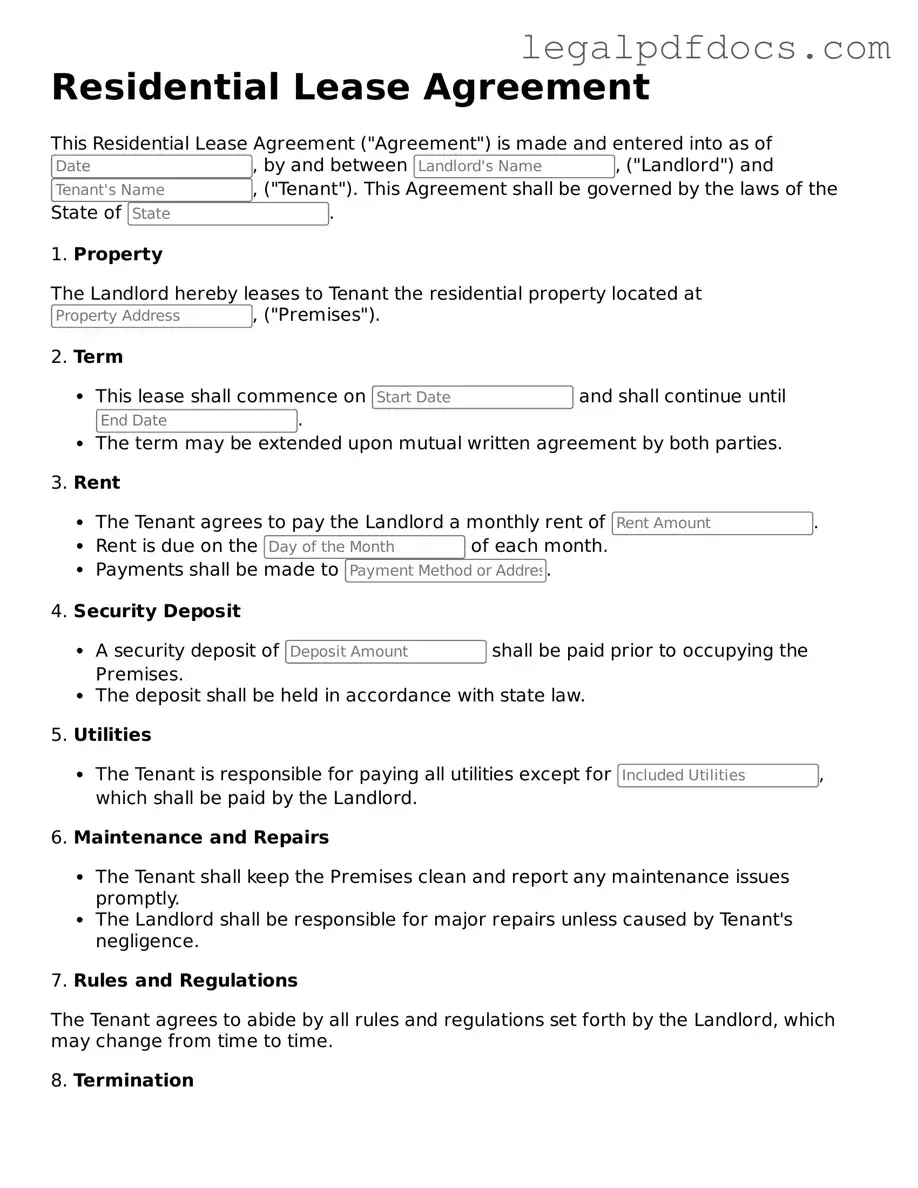Residential Lease Agreement Template
A Residential Lease Agreement is a legal document that outlines the terms and conditions between a landlord and a tenant for renting a residential property. This agreement protects the rights of both parties and ensures clear communication regarding rent, maintenance, and other essential aspects of the rental relationship. Ready to secure your rental situation? Fill out the form by clicking the button below.
Open Residential Lease Agreement Editor Here
